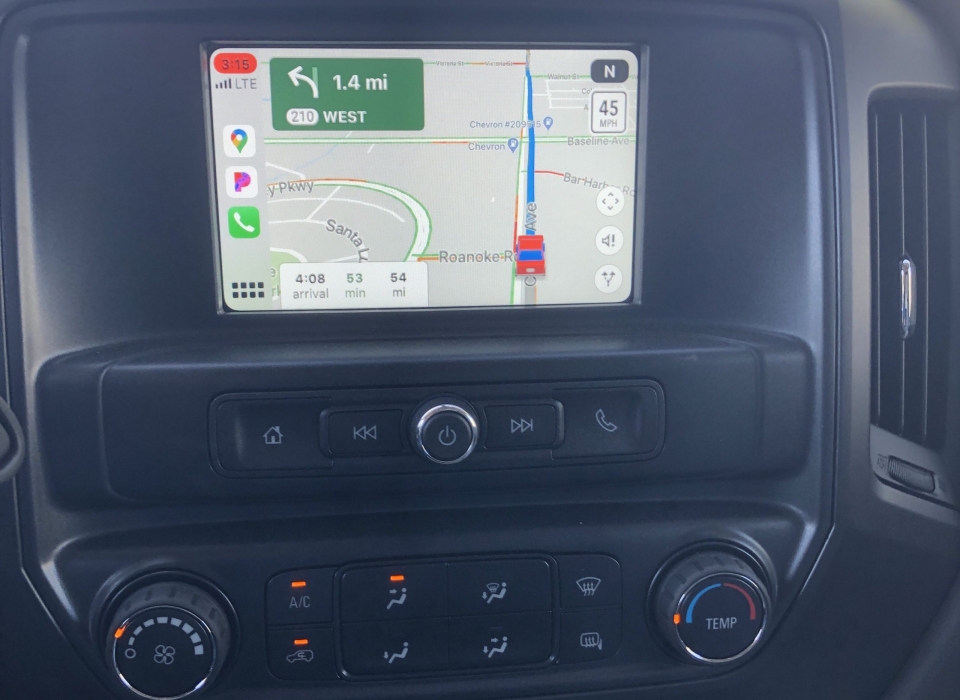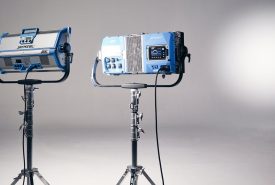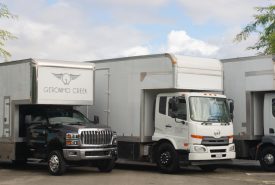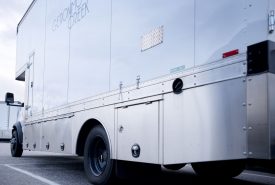What does it mean to be a safe driver?
Over the last 20 years of business, we have encountered a wide range of disasters involving vehicles on the road. All of these accidents could have been avoided by taking a few simple steps. The most common mistakes are caused by hiring inexperienced drivers who were working long hours on set.
Driving a studio grip truck requires a skill set beyond your standard driver. It is very important to know the difference when hiring your crew. While cutting corners on your driver might save money upfront, it can have long term, devastating effects on your production and the safety of those around you.
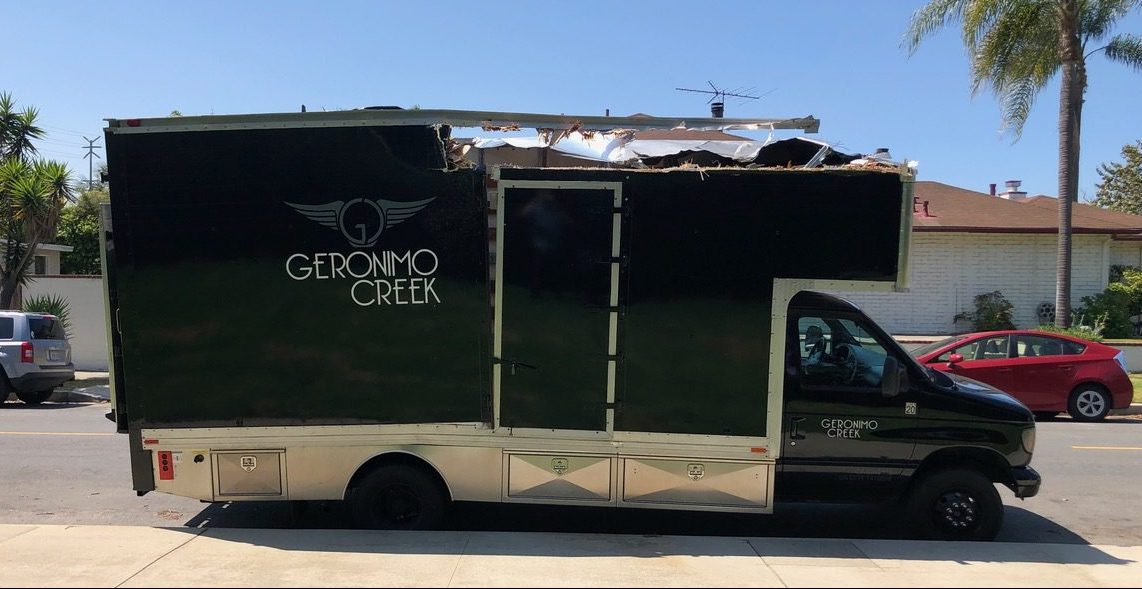
What defines a skilled driver?
- Experience. Ask your drivers about their experience with commercial vehicles. Also, ask if he or she has experience operating heavy machinery while working at a job. A studio vehicle is a heavy machine and requires a learning curve to operate. You want your drivers to come with this experience so that they’re not learning on the job at your expense.
- Age. This one is often overlooked. Both drivers who were behind the wheel of the grip trucks (pictured above and below) were 25 years old at the time of the accidents. That is just too young. In California, a driver cannot even rent a vehicle until they are 25, which means these drivers had less than one year of experience driving a commercial truck or van. With statistics showing that drivers in their 20s are much more likely to be involved in an accident than those in their 30s or 40s, young drivers are charged a premium by insurance companies. Being careful comes with age. Good driving instincts will avoid accidents on the road.
- Training (class A or B license). If you can find a driver with a class A or class B license, the DMV has certified them to operate a vehicle that exceeds 26,000 pounds. This is crucial since the training involved in this certification is extensive and an asset to your production. The pre-trip inspection training is also an important process that protects you against mechanical failure or surprise tire issues. If your driver does not have this credential, ask them to produce evidence of having experience driving commercial vehicles.
- Demeanor. You want your drivers to be calm and mature. A driver who is poised and collected is less likely to speed or drive aggressively with your rented grip truck or van.
- DOT compliance. For union jobs, most production companies follow DOT compliance. This protocol helps screen drivers against possible drug, health and licensing issues. A non-union production can learn a lot of safe driving tips on the DOT website. Driving records can also be requested on the CA DMV website.
What can Geronimo Creek do to ensure driver safety?
Maintenance
While a properly maintained vehicle cannot protect against bad driving, it can do a lot to prevent an accident. We have dedicated maintenance logs for each vehicle that tracks every repair or maintenance interval performed. Here is an example of our monthly inspection form.
We also recently installed real-time GPS trackers in all of our studio trucks and vans. These trackers, provided by Samsara Fleet Management, have artificial intelligence to monitor driving events. If your driver is speeding or driving erratically, your driver will get an audio warning from within the vehicle and we will get an email and forward it to you. We also have access to forward-facing dashcam footage, should there be an accident.
Invest in a good insurance carrier
There are a lot of options when choosing a carrier to insure your production. Some carriers are much better at protecting their clients than others. A common misconception about production insurance is that it will fully protect you if there is an accident. That is not true and can result in the loss of your business. If you are underinsured, the balance to the loss comes from your production company. Insurance does not limit the amount of a claim.
Safe driving practices to follow
An experienced and rested driver is more than just an asset to your team. He or she is an insurance policy against all the things that can go wrong when hiring an untrained, unskilled driver.
Here are some good practices your driver can follow:
Be early
We can’t stress this enough. Too often, inexperienced drivers are late when they pick up the truck and try to make up time while on the road. This causes aggressive driving, leading to mistakes.
Hands-free
Stay off your phone. Don’t call or text and drive. Map your destination before driving. Bring a cell phone cradle. Most of our vehicles have GPS navigation built-in. Most of our grip trucks and vans also have updated stereos featuring CarPlay and Android Auto.
Walk-around inspection
A walk-around inspection should be standard procedure every time you get in a commercial vehicle. A proper walk-around could be a blog post in itself, but in short, visually inspect the vehicle for mechanical issues. Check the tires, undercarriage and look for leaks from the engine compartment. When you start the vehicle, check the gauges and listen for unusual sounds when the engine is running.
Better safe than sorry: performing a dummy check
The driver is responsible for the cargo, so it’s critical that he or she makes sure that all cargo is secure before driving. The crew is usually tired when strapping gear inside a truck, so a good dummy check can prevent damage — and frustration — from occurring.
Seatbelt
Always wear a seatbelt — statistically, that is the single most effective way of reducing the chance of death or serious injury in the event of an accident.
Interesting Facts about Safe Driving Practices
Distracted driving
“Drive time” can never mean “down time.” Drivers make more than 200 decisions during every mile traveled, so it’s critical that a driver is alert and focused on the task at hand.
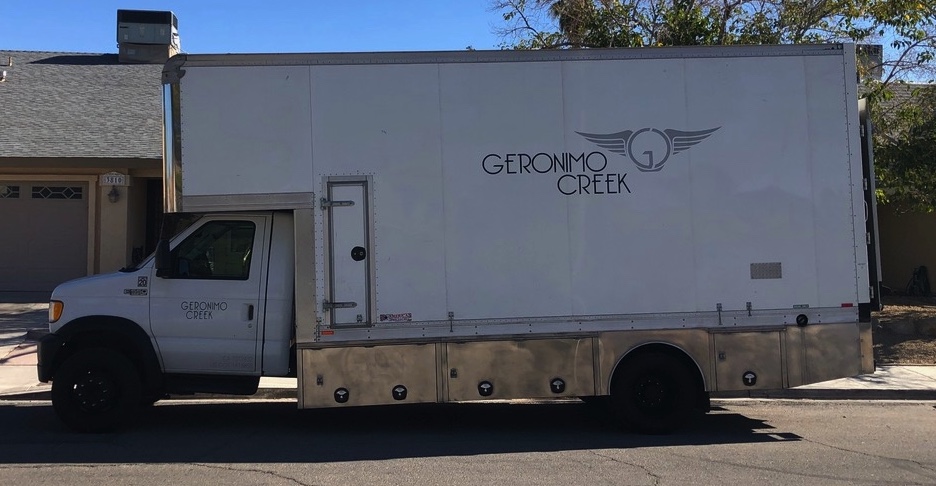
Fatigued Driving
A safe driver is well-rested and alert. Fatigued or drowsy drivers get in more than 100,000 accidents a year. Fatigue is very prevalent in filmmaking, so it’s crucial that drivers make sleep and rest a priority. If your driver is also a set technician, he or she needs to rest during the workday. For commercial driving, this is called being “off-duty” and is mandatory for every 8 hours of work or driving time.
Alcohol and drug-impaired driving
Do not drive when impaired. Period. Alcohol is a contributing factor in 39% of all work-related traffic crashes and 40% of all fatal motor vehicle crashes. Do not share a beer with your driver after wrapping up on set. It can wait!
Filing an insurance claim
In the unfortunate event you have a bad accident, first, check to see if anyone was injured. Bodily injury is the single most destructive event that can happen. Broken equipment can always be replaced, bodily harm can destroy lives.
The vehicle you rent is the responsibility of your production company. We have a dedicated maintenance log for each vehicle and take a minimum of 12 pictures before every rental. This procedure is to protect you from any pre-existing issues and ensures the vehicle you rented is in good condition.
If your driver is dishonest about an accident, the insurance claim takes longer. Productions are responsible for Loss of Use when they damage a vehicle. Loss of Use is similar to car rental coverage on our personal insurance, but in this case, it covers the business losses caused by taking a vehicle out of service. The longer your driver refused to admit what happened, the longer the Loss-of-Use charges rack up. Luckily, our access to video footage can help resolve a claim quickly so there is no question who is responsible and no extended Loss-of-Use claims for our clients.
Most damage is minor. The most common vehicle issues are tire sidewall damage from taking corners too short and tree damage to the upper corners of the cargo box. We’ve also seen gashes running the length of our jockey boxes, as well as lift gates torqued off-center and, of course, dents and scrapes on our bumpers and doors.
Hiring an experienced driver drastically reduces the chances of these mistakes happening. A lot of our work is union, where the truck s are driven by Teamsters. In most cases, these drivers always have a spotter on radio when parking a vehicle. The more experienced the driver(s), the more careful their actions are when they are responsible for the equipment you rented.
Driver training
Please visit OSHA’s guidelines on how employers can reduce motor vehicle crashes: https://www.osha.gov/Publications/motor_vehicle_guide.html

